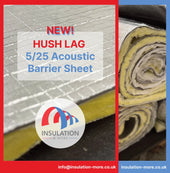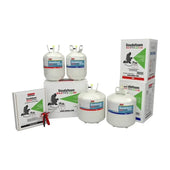If you live in an older home, you may find yourself dealing with uninsulated or poorly insulated ductwork. This can lead to energy inefficiency, discomfort, and higher utility bills. You essentially have two options - insulate the existing ducts or replace them entirely. There are pros and cons to each approach to weigh when deciding the best course of action.
Factors to Consider When Choosing Between Insulation and Replacement
Making an informed decision between insulating your old ducts and replacing them entirely hinges on understanding the key aspects of your current HVAC system and the potential benefits or drawbacks of each option. Here, we delve deeper into these factors to help guide your decision.
Age and Condition of Current Ducts
Understanding the age and overall condition of your ductwork is crucial. Here's what to consider:
-
How old are the current ducts? If they've been around for decades, they might be nearing the end of their useful life. Extremely old ductwork, especially those made from materials like galvanized steel, can structurally deteriorate, making insulation a short-term solution.
-
Do they leak significantly? Major leakage might not just be about gaps; it could indicate a structural problem, which necessitates replacement.
-
Are there visible signs of damage or corrosion? Ducts with considerable damage, especially when combined with signs of corrosion, are often better replaced than repaired.
-
Maintenance History: A ductwork that hasn't been regularly checked or maintained might have hidden issues. Such systems might not last long even after insulation.
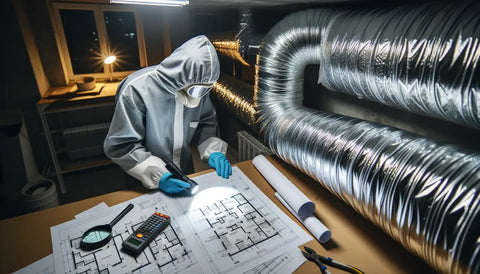
Installation Considerations
Insulating or replacing ducts requires a certain level of disruption to your home. Consider the following:
-
Accessibility: If your ducts are buried deep within walls or hard-to-reach areas, insulating them can be a challenge. In such cases, duct insulation might not be feasible, leaning the decision towards replacement.
-
Space Constraints: Some duct systems are in tight spaces where adding insulation is not viable. Replacement with newer, more compact systems might be more suitable.
-
Renovation Impact: Insulation, especially if using materials like fiberglass insulation, could mean tearing apart sections of your home. It's essential to assess the scale of the disruption.
Performance Factors
The efficiency of your HVAC system is crucial for comfort and energy savings:
-
Energy Efficiency: Older ducts, especially those made of materials that aren't good insulators, can be energy guzzlers. Modern ducts or insulating materials like armaflex pipe insulation might offer better energy efficiency.
-
Existing R-value: The R-value is a measure of thermal resistance. The higher the value, the better the material insulates. If your ducts already have a decent R-value, adding insulation might not yield significant benefits.
-
Effectiveness of Insulation: Factors such as the type of duct, local climate, and insulation material—whether it's rockwool insulation or phenolic insulation—can impact the effectiveness of insulating your ducts.
Budget and Cost Comparison
Money matters. Here's what to consider when budgeting:
- Insulation vs. Replacement Costs: It's vital to get quotes for both insulating and replacing your ducts. Remember, while insulation materials like polyurethane insulation might seem cost-effective, labor costs can add up.
- Rebates and Incentives: Some regions offer incentives for homeowners who choose energy-efficient solutions. Check if there are rebates for kingspan insulation or other efficient alternatives.
- Payback Period: Calculate the expected energy savings for both options and determine which one has a shorter payback period.
- Associated Repairs: Both insulating and replacing ducts might necessitate other repairs or changes in your home. Factor these potential costs into your decision.
To sum it up, the decision to insulate or replace old ducts is multifaceted. It's about balancing the current state of your ducts, the potential benefits of each option, and your budget. By considering the above factors, you can make an informed choice that suits your home, budget, and long-term goals.

The Benefits of Insulating Old Ductwork
Insulating old ductwork might not just be about saving a few dollars—it can have a myriad of benefits that might make it a preferable choice over replacement, especially for ducts that still have some life left in them.
Increased Energy Efficiency
- Heat Transfer Reduction: Insulation acts as a barrier, minimizing conductive heat loss or gain as air traverses through the ducts. Materials like foam pipe insulation are specifically designed to enhance this property.
- Boost in HVAC Efficiency: With reduced heat loss, your HVAC doesn't have to work overtime. An insulated system can ramp up its efficiency by 20% or even more.
- Optimized Energy Use: The efficiency means the system runs less frequently, ensuring energy conservation, which is especially beneficial in regions with extreme temperatures.
Improved Temperature Comfort
- Steady Air Temperatures: With insulation, temperature fluctuations from one room to another become less pronounced. It ensures a uniform comfort level throughout your home.
- Consistent Heating and Cooling: The minimized heat loss means your heating or cooling reaches its destination—your rooms—more consistently.
- Elimination of Drafts: Insulating materials, especially those like kaimann insulation, can curb cold drafts originating from ductwork situated in colder spaces like basements or attics.
Healthier Indoor Air Quality
- Reduced Contaminant Infiltration: Insulating seals potential gaps and breaches in the ducts, reducing chances for dust, allergens, or pollutants to enter, especially if using specialized products like acoustic insulation for soundproofing pipes and ducts.
- Limiting Moisture Issues: Proper insulation minimizes condensation, which could otherwise become a breeding ground for mold or mildew.
- Blocking External Pollutants: A well-sealed duct system reduces the likelihood of contaminants from external spaces like attics or crawlspaces infiltrating your home's air.
Lower Energy Bills
- Direct Savings: With an insulated system working more efficiently, the immediate benefit is visible in reduced energy bills.
- Return on Investment: The cost of adding insulation materials such as polyethylene insulation can often be recouped swiftly through the savings on your HVAC bills.
- Conservation of Energy: Simply put, well-insulated ducts can achieve the desired indoor temperatures with a fraction of the energy otherwise needed.
Preservation of Existing Ductwork
- Avoiding Infrastructure Overhaul: Instead of an extensive replacement process, insulating can refresh your existing duct system.
- Lifespan Extension: Proper insulation can add years to your ducts, ensuring they serve you longer.
- Minimized Disruptions: Insulating often means there's no need to tear down walls or disturb the structure. Especially when using convenient solutions like insulation tapes, the process can be less invasive.
So if your ducts are in fairly good shape and don't show significant signs of wear and tear, insulation can indeed be a game-changer. It's an investment in home comfort, health, and wallet-friendly energy consumption.
Options for Insulating Existing Ductwork
Insulating your existing ductwork is an exercise in understanding what best suits your needs. With multiple insulation options available, it's crucial to choose the right method for your home's unique situation. Let's explore the most popular options:
Duct Insulation Wraps
These wraps, often made of fiberglass insulation or foam, are designed to be wrapped around the ducts, forming an insulating layer.
Pros of Duct Insulation Wraps
- Affordability & DIY Potential: Typically less costly, many homeowners feel comfortable tackling wrap installation themselves.
- Adaptable Fit: These wraps are flexible, conforming tightly even to irregularly shaped ducts.
- Variability: Comes in a range of thicknesses and R-values, like the rockwool insulation wraps, ensuring you can pick what's right for you.
Cons of Duct Insulation Wraps
- Handling Fiberglass: The material can irritate skin, so using protective gear is essential.
- Securing Challenges: Wraps require tapes and fasteners for secure placement. Over time, these might lose their adhesiveness.
- Maintenance Issues: Accessing a wrapped duct for any repairs or checks can be a bit of a challenge.
Spray Foam Insulation
This liquid foam is sprayed onto the ducts, where it expands to seal and insulate simultaneously. Options like polyurethane insulation are commonly used for this purpose.
Pros of Spray Foam Insulation
- Superior Sealing: One of the best for preventing air leaks.
- Versatility: Especially good for ducts in hard-to-reach or awkward spaces.
- Perfect Conformation: The expanding foam ensures it fits any duct shape, large or small.
Cons Spray Foam Insulation
- Pricing: Generally pricier than wraps. It's also recommended to get professionals to handle the installation.
- Mess Potential: The process can get messy, and like fiberglass, protective gear is a must.
- Application Risks: If not done correctly, there's a chance of blocking vents or dampers.
Duct Board Insulation
These are rigid boards, often made from fiberglass, that are fixed to the external surfaces of ducts. For those who prefer non-fiberglass options, materials like phenolic insulation boards can be considered.
Pros of Duct Board Insulation
- Ease of Installation: For professionals, these boards are straightforward to cut and attach.
- Consistent Coverage: They offer a steady insulation thickness, ensuring you get the most out of the chosen R-Value.
- Seamless Barrier: Unlike wraps, boards can create a near-seamless insulating barrier.
Cons of Duct Board Insulation
- DIY Challenges: Those looking for a DIY solution might find boards trickier to handle, especially for neat and correct installation.
- Flexibility Issues: Not the best choice for ducts that wind or have many angles.
- Durability Concerns: Over time, these boards can compress, which might slightly diminish their insulating properties.
To conclude, each insulation method has its merits and challenges. Your choice should factor in the duct's location, shape, your budget, and whether you're leaning towards a DIY approach or professional installation. Using products from trusted collections, like kingspan insulation or armacell, can further enhance the effectiveness and longevity of the insulation.
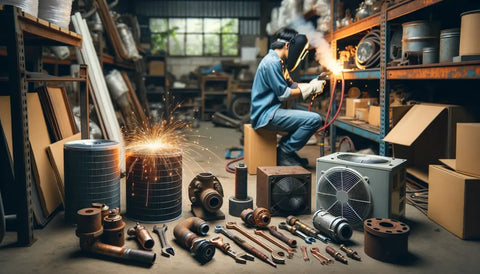
Key Installation Considerations for Insulating Ductwork
To maximize performance, there are some best practices to follow when having your ducts insulated:
Clear Access to All Duct Sections
- Ducts must be easily accessible to install insulation properly.
- This may require moving insulation or stored items in attic/crawlspace.
- Enclose any ducts running through wall cavities to allow access.
Sealing All Joints and Seams
- Use mastic sealant or metal tape at all joints and connections.
- This prevents costly air leaks that reduce HVAC efficiency.
- Sealing ducts improves insulation performance.
Confirm Adequate Space Around Ducts
- Insulation requires sufficient space around duct exterior.
- Ducts crammed tightly in framing may need to be moved or replaced.
- Enlarge framing cavities if needed to allow insulation clearance.
Protect Duct Insulation from Damage
- Insulation should not be compressed or touch other surfaces.
- Use durable exterior wraps or shields to protect insulation.
- Keep insulation away from high-heat sources like chimneys.
Proper clearance, access, and protection ensure insulation can be installed correctly and achieve maximum effectiveness.
Potential Drawbacks of Insulating Old Ductwork
While often an excellent solution, insulating old ducts has some possible downsides to note:
Upfront Installation Costs
- Insulation materials, labor, and additional repairs add up.
- Rebate programs sometimes available, but costs still significant.
- Getting estimates from insulation contractors is highly recommended.
Temporary Disruptions
- Insulating attic/crawlspace ducts can create dust and noise.
- Accessing ducts may require moving insulation and storage items.
- Professional installation minimizes hassles but takes time.
Old Ducts Remain Less Efficient
- While improved, older ducts still won't perform like new modern ducts.
- Insulation helps, but old galvanized steel ducts lose more heat than alternatives.
- Old ducts will likely still have higher leakage rates than new duct systems.
Potential Clearance Issues May Arise
- Adding insulation takes up space around duct exterior.
- Tight fits could limit how much insulation is possible.
- Buried ducts may need to be rerouted if unable to be accessed.
Improper Installation Risk
- Insulation must be installed properly to achieve advertised R-value.
- Poor sealing and protection can diminish insulation performance over time.
- Hiring certified professionals is highly recommended to avoid problems.
Depending on your specific duct system, available space, and access, insulating older ductwork may not resolve all efficiency issues.
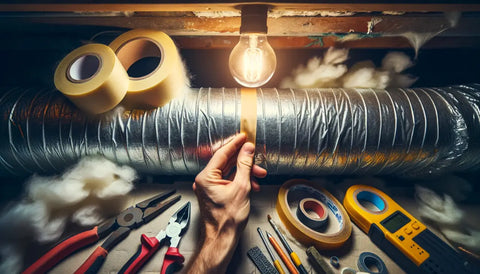
Why Replacing Ductwork May Be the Better Option
In some situations, it is better to replace old, outdated ductwork rather than attempting to insulate it. Potential benefits of full duct replacement include:
Install Modern, Efficient Materials
- New duct materials like rigid metal or fabric ducts offer better insulation.
- Flexible ducts resist heat transfer far better than old sheet metal types.
- Modern duct designs are made to limit energy losses.
Customize Duct Layout
- New ducts can be routed to improve airflow and balance.
- Duct sizes can be tailored to your home's specific HVAC needs.
- Poor existing duct placement can be corrected.
Resolve Existing Duct Problems
- Replacing eliminates issues like severe leakage or disconnected ducts.
- Damaged or deteriorated sections prone to failure get replaced.
- Insulation alone cannot fix underlying duct problems.
Improve Airflow and Performance
- New ducts can be sized to optimize air delivery.
- Smooth interior walls reduce resistance and turbulence.
- Better duct layout improves HVAC performance.
Qualify for Rebates and Tax Credits
- Utility companies offer rebates for duct replacement in many areas.
- Energy efficiency tax credits may cover 20-30% of duct replacement costs.
- Check local codes and programs for available incentives.
Upgrading your entire duct system can provide energy savings and performance benefits greater than insulating existing ducts in poor condition.
Key Factors in the Insulate vs. Replace Decision
When trying to decide whether insulating or replacing makes more sense, keep these key factors in mind:
- Condition of existing ducts - Are they structurally sound enough for insulation?
- Duct type and location - Rigid metal or flexible? Attic, crawlspace, or wall cavities?
- Accessibility for insulation - Is there adequate clearance to add insulation properly?
- Estimated remaining lifespan - Are ducts too old to justify preserving?
- Insulation cost vs replacement cost - Get bids for accurate cost comparison.
- Existence of duct problems - Severe leakage? Damaged ducts? Poor layout?
- Available energy rebates and incentives - Check for duct replacement credits.
- Desired efficiency level - Will insulation achieve your energy savings goals?
Carefully weighing these factors will lead to the ductwork solution that best fits your home's needs and budget long-term.

Improving Efficiency in Old Homes: Beyond Just Ductwork
Keep in mind that duct insulation or replacement is just one part of making an old home more efficient. Additional recommended efficiency upgrades include:
- Adding attic insulation - Most old homes lack sufficient attic insulation. Adding R-30 or more can save energy.
- Sealing air leaks - Caulk and weatherstrip windows, doors, vents and openings to minimize air infiltration.
- Upgrading HVAC equipment - Newer furnaces and AC units convert fuel to heat far more efficiently.
- Improving windows - Double pane windows prevent heat loss much better than old single pane windows.
- Converting to LED lighting - LED bulbs use 80% less energy than incandescent lighting.
This comprehensive whole-house approach yields the largest total savings on energy bills. Duct improvements should be just one component of making your older home more comfortable and efficient.
Consult the Experts Before Proceeding
Determining if insulating or replacing makes most sense depends on your specific duct type, condition, location, and configuration. Consulting qualified HVAC contractors is highly recommended before investing in any duct improvements. Professional assessments can determine whether:
- Your existing ductwork is suitable for insulation.
- Adequate space exists to properly insulate your ducts.
- Major repairs are needed before insulating existing ducts.
- Duct replacement is warranted due to condition, type or location.
- Permits are required for the duct alterations being proposed.
Experienced HVAC pros have the knowledge to analyze your home's ductwork situation and propose the right solution. They can also ensure the work is done properly for maximum effectiveness and energy savings.
Conclusion - Make an Informed Ductwork Decision for Your Home
Old, inefficient ductwork could be robbing your home of energy efficiency and comfort while driving up utility costs. But determining whether to insulate or completely replace your ducts requires careful consideration of several factors we've covered here. In many cases, adding insulation provides a cost-effective duct efficiency boost in homes with ducts in reasonable condition. For ducts that are deteriorating, poorly designed, or highly inaccessible, full replacement may be the wiser investment. Equipped with the key information above, you can now work with HVAC professionals to make the best possible decision for improving your home's ductwork. This will pay dividends in improved comfort, energy savings, and HVAC performance for years to come.






